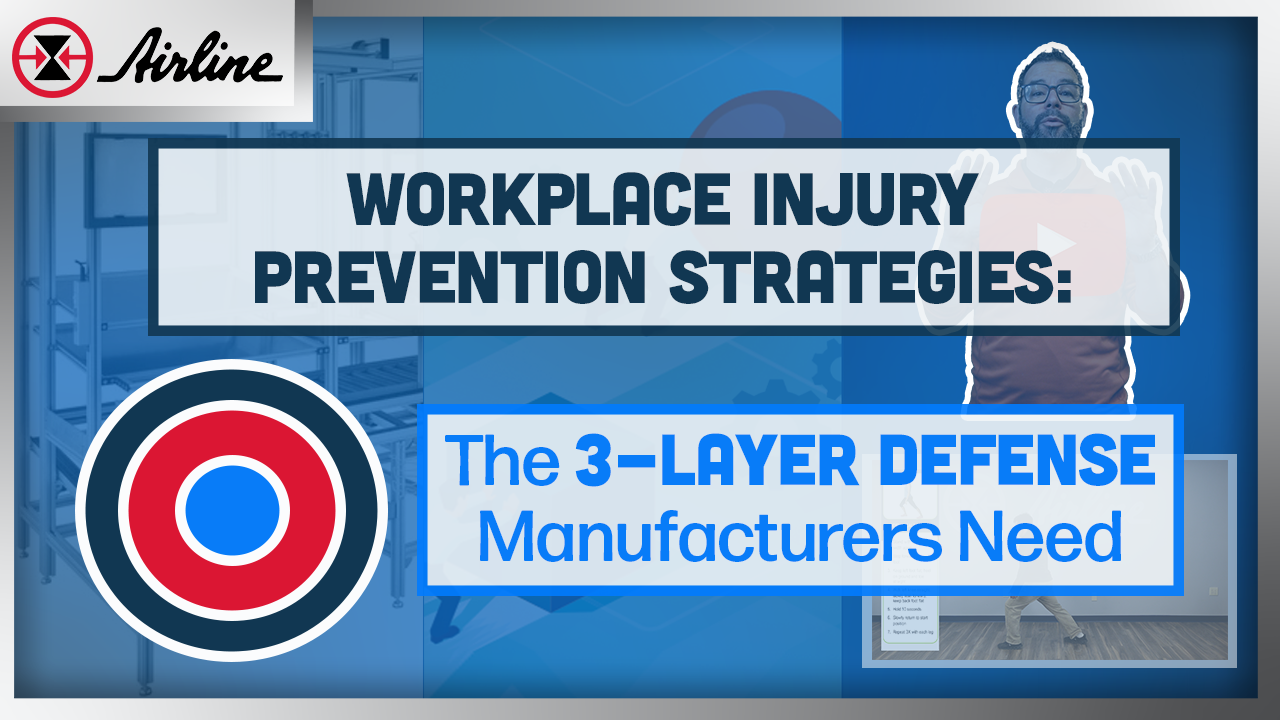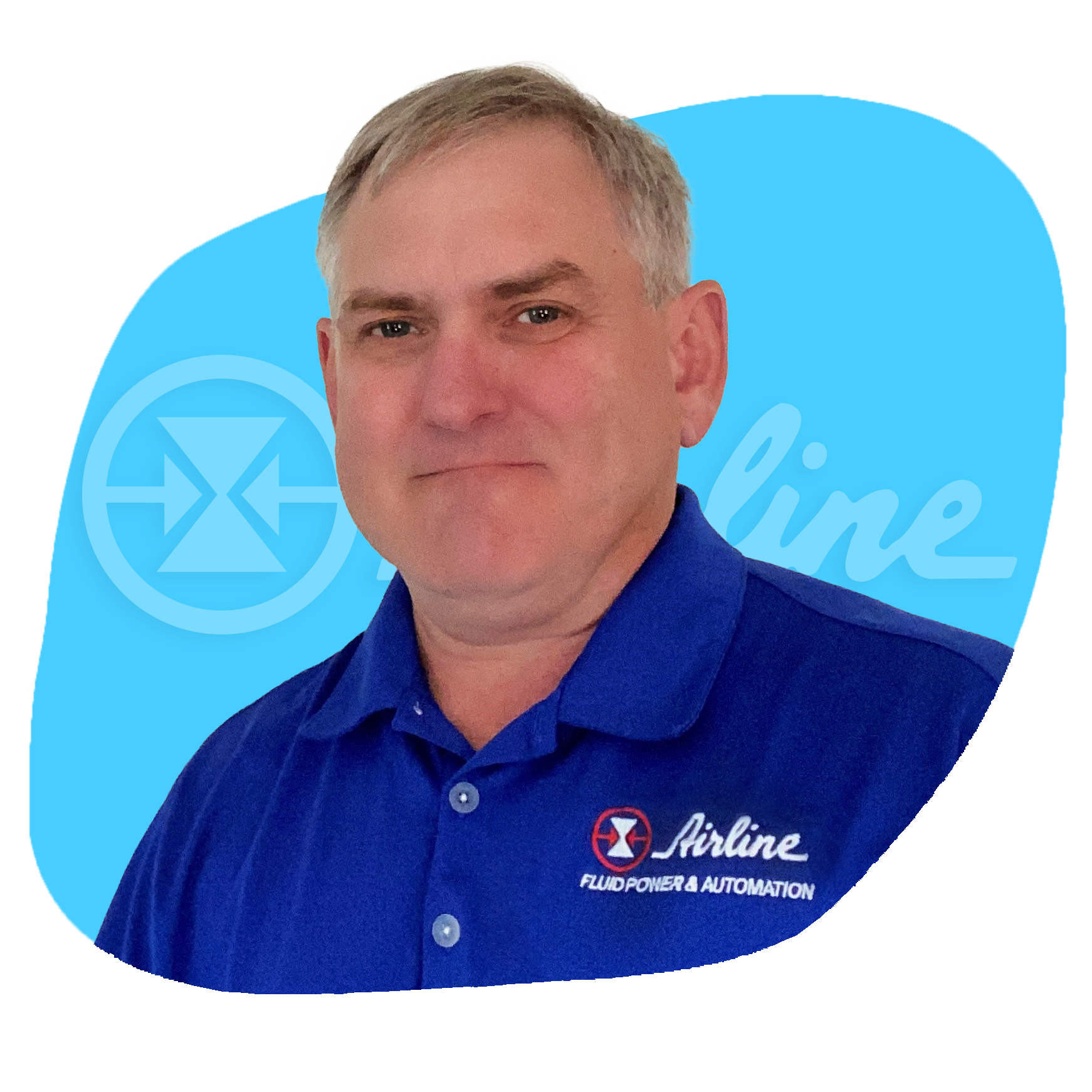Most companies focus on one piece of injury prevention: installing ergonomic equipment, providing safety training, or optimizing processes, yet musculoskeletal disorder (MSD) claims continue to pile up.
The truth is, relying on a single measure is rarely enough. Decades of data show that multifaceted, layered safety programs combining equipment upgrades, employee education, and process improvements are far more effective at reducing workplace injuries than one-dimensional approaches.
And the stakes are high.
According to the National Institute for Occupational Safety and Health (NIOSH), MSDs cost U.S. businesses up to $54 billion every year in direct expenses. In contrast, indirect costs like lost productivity, time off due to injury, and higher insurance premiums add tens of billions more.
Preventing these losses requires a comprehensive, three-layer defense system: not just a single fix.
In this article, we’ll break down what some workplace safety programs miss, why they fail, and how industry leaders, like Airline, are using a layered approach to protect workers and strengthen their bottom line.
Let's get into it.
Skip to a Section
What is a Musculoskeletal Disorder (MSD)? | The Problem | The Solution | The Multiplication Effect | Common Pitfalls to Avoid | Start Building Your 3-Layer Defense | Additional Resources
|
Access our free stretching and ergonomics tutorials to begin protecting your workforce immediately |
What is a Musculoskeletal Disorder (MSD)?
A musculoskeletal disorder is an injury or pain in the human musculoskeletal system, including joints, ligaments, tendons, muscles, nerves, and structures that support limbs, neck, and back. In a workplace setting, musculoskeletal disorders are primarily the result of stresses placed upon various body parts during the performance of work-related tasks.
Although commonly referred to as repetitive motion injury, it's important to note that this term can be somewhat misleading. Repetitive motion is just one of several ergonomic risk factors that highlight activities that could potentially lead to musculoskeletal disorders.
To Learn more about the basics of MSD, check out our article Workplace Ergonomics Safety: Tips, Equipment, and Examples.
The Problem: Why Traditional Safety Approaches Fall Short
The “Band-Aid Mentality”
Too often, companies approach workplace injury prevention as a box to check for compliance rather than as a long-term business strategy. This “Band-Aid mentality” leads to surface-level fixes that fail to address the root causes of musculoskeletal disorders (MSDs).
Common failures include:
- Installing ergonomic chairs, but leaving overall workstation design unchanged
- Delivering a single annual safety training, then overlooking daily behaviors and habits
- Streamlining processes for efficiency without considering the strain placed on workers
The result? According to the U.S. Bureau of Labor Statistics, 2.6 to 3.2 million workplace injuries and illnesses are reported every year, with MSDs making up roughly 28% of all serious cases. That means sprains, strains, and repetitive motion injuries remain one of the largest, and most preventable, sources of lost time and cost for U.S. employers.
The Solution: The 3-Layer Defense System
Just like military defense systems use multiple layers of protection, workplace injury prevention requires comprehensive coverage. Missing one layer could cause the whole system to fail.
Layer 1: Environmental Defense - Ergonomic Workstations
The purpose of this approach is to eliminate risk factors at their source by designing workstations that support both efficiency and worker well-being.
This includes height-adjustable surfaces that fit the needs of most employees, flow racks placed within comfortable reach zones, anti-fatigue matting for standing tasks, and tool positioning systems that minimize awkward postures. Modular components allow for flexibility as processes evolve.
Over the years, research has shown that proper workstation height can significantly reduce back strain, optimal reach zones help lower the risk of shoulder injuries, and anti-fatigue surfaces contribute to reducing discomfort in the legs and feet.
|
See ergonomic design in motion! Watch how an ergonomic conveyor workcell transforms productivity and comfort.
Ready to rethink your workspace? |
Layer 2: Personal Defense - Worker Preparation & Maintenance
The purpose of this layer is to prepare workers much like occupational athletes, emphasizing the importance of physical readiness and ongoing maintenance.
Just as professional athletes don’t rely solely on equipment but prepare their bodies to handle the demands of their sport, industrial workers also face repetitive stress that requires proactive care. Adopting this “occupational athlete” mindset helps prevent cumulative damage over time. Companies that introduce structured stretching programs and wellness initiatives often see meaningful improvements in musculoskeletal health, greater employee engagement, and reductions in absenteeism, underscoring the value of investing in worker preparation and wellness.
What It Includes:
Pre-shift dynamic stretching routines (5-7 minutes)
- Shoulder rolls and arm circles for upper body preparation
- Knee marches and squats for lower body activation
- Torso rotations for core stability
Mid-shift static stretches (2-3 minutes every 2 hours)
- Wrist flexion/extension for repetitive motion workers
- Shoulder stretches for overhead work
- Modified hamstring stretches for standing workers
End-of-shift recovery protocols
Implementation Made Simple:
- Provide video-guided routines that workers can follow
- Build stretching time into shift schedules
- Train supervisors to model and encourage participation
- Track participation and correlate with injury data
|
Train like an occupational athlete. Follow our 10-Minute Dynamic Stretch Routine to warm up your body and protect against daily repetitive stress.
Recover and restore. Use our 10-Minute Static Stretch Routine to release tension, support mobility, and prevent cumulative strain.
|
Layer 3: Systematic Defense - Lean Process Optimization
The third layer focuses on eliminating waste and unnecessary strain through smart process design.
By applying Lean principles, organizations can actively reduce the risk of workplace injuries while improving efficiency. Tools such as value stream mapping help uncover steps that create excess physical stress, while 5S implementation ensures workspaces are organized to minimize reaching, bending, and lifting. Pull systems replace batch-and-queue operations that often lead to repetitive strain, and continuous improvement keeps processes under regular review to further reduce physical demands.
When Lean principles are integrated with ergonomics, the benefits multiply.
Mistake-proofing (poka-yoke) encourages naturally healthy postures, standardized work maintains consistent and ergonomically sound methods, and visual management makes best practices clear and easy to follow.
In practice, this integration can be seen in systems such as point-of-use storage that cuts down on walking and reaching, height-adjustable assembly lines that adapt to different workers, and rotating job assignments that help prevent the buildup of repetitive strain.
|
See the results for yourself. Watch our success story on Lean work cell implementation—how vision became reality. |
The Multiplication Effect: Why All 3 Layers Work Together
Layer Integration Benefits:
- Layer 1 + 2: Ergonomic workstations work better when workers are physically prepared
- Layer 2 + 3: Stretching routines are more effective when processes minimize strain
- Layer 1 + 3: Lean processes identify where ergonomic improvements have maximum impact
- All 3 Together: Create a self-reinforcing system that continuously improves
The Compound ROI:
The benefits of this three-layer defense build steadily over time.
In the short term, organizations often see fewer musculoskeletal injuries and healthier, more energized workers. As time goes on, productivity improves as employees experience less strain and fatigue. In the long term, businesses can realize financial advantages, such as lower insurance costs and stronger recruitment and retention, as a reputation for prioritizing worker well-being takes hold.
Ultimately, the greatest return is cultural: a shift toward proactive safety thinking that becomes embedded in daily operations.
Common Pitfalls to Avoid
The "Set It and Forget It" Trap
- Problem: Implementing systems without ongoing support
- Solution: Build maintenance and improvement into regular operations
The "One Size Fits All" Mistake
- Problem: Applying generic solutions without considering specific job demands
- Solution: Customize each layer based on actual work requirements
The "Leadership Lip Service" Issue
- Problem: Management talks about safety but doesn't model behavior
- Solution: Ensure visible leadership participation in all three layers
Start Building Your 3-Layer Defense
The companies that thrive in today's competitive manufacturing environment understand a fundamental truth: worker safety and operational excellence are not competing priorities - they're complementary strategies.
Your next steps:
- Assess your current approach - Which layers are you missing?
- Identify your highest-risk areas - Where would the 3-layer defense have maximum impact?
- Build your implementation plan - Start with quick wins and build momentum
- Measure and refine - Use data to guide your improvements
The bottom line: You can continue treating safety as a compliance cost, or you can transform it into a competitive advantage. Companies using the 3-layer defense system don't just prevent injuries - they create cultures of excellence that drive business results.
| Ready to build your comprehensive defense against workplace injuries? Contact our team to discuss how ergonomic workstations, worker preparation programs, and lean optimization can work together to protect your workers and your bottom line. |








Leave Comment